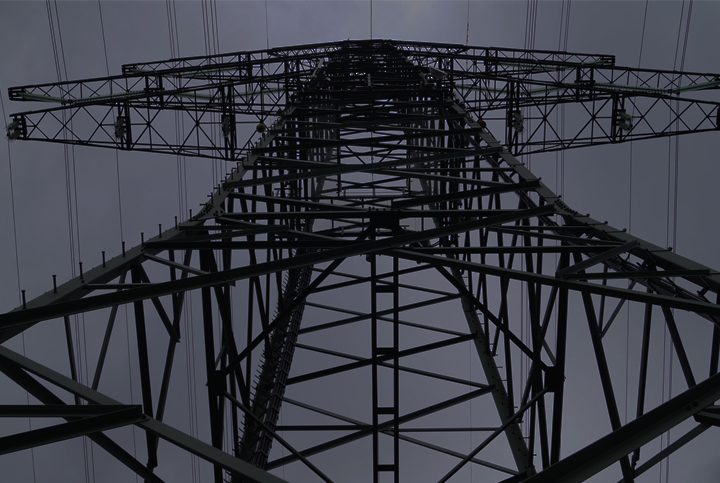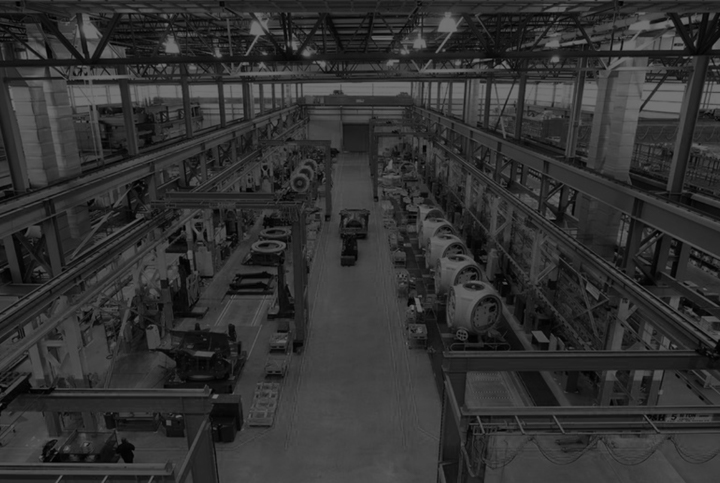Deployment of IoT Devices
What is IoT? The term ‘Internet of Things’ (IoT) refers to physical devices connected to the internet, working as a unit to collect and share data, and subsequently perform one or more actions. We’ll be exploring some of the more prolific use cases for consumer-facing IoT systems in this article, and will assume you’re familiar with IoT basics. To learn more about the fundamentals of IoT in more detail, you can read our recent article here.
Today, the number IoT devices connected globally currently sits at approximately 20 billion, but that figure is expected to explode to over 65 billion by 2025. This device-count spans a wide range of sophisticated industrial tools through to ‘ordinary’ household objects. It may be surprising, that although IoT is now embraced by all types of industry verticals, the consumer market has taken a larger market share of approximately 60% of all IoT-connected devices in 2021. Initially, IoT was strictly deployed in the industrial/commercial purposes, but based on current statistics, the narrative has changed. So too, the interplay between this occasionally arbitrary demarcation of ‘commercial vs consumer’ as we see the blurring of this line and a symbiotic interplay between the two sets.
What are the Most Common Consumer IoT Devices?
All connected devices by their very nature share information and integrate with other systems to make your domestic experience more pleasant and effective. For instance, if you register as being ‘away from home’ for an extended period, your air conditioning may not automatically power on as it would normally, your fridge may go into an eco-mode using lower power, and your vacuum cleaner will run less frequently, and your alarm system become active for the duration – all just from selecting ‘holiday mode’ from an app. These smart devices can also send instant notifications to your smartphone via apps to let you know that everything is as it should be, and still secure.
Smart Home Security
Smart home security initiatives see your wifi network connecting devices like keyless entry, home surveillance and presence-sensor systems among others. Unauthorised entries are more easily prevented, and at worst, can be monitored and recorded. Close integration across devices means you’ll receive an instant alert in case of a broken window, triggered door alarm, or leaking pipe as long as it is connected to the ecosystem.

IoT Environmental Maintenance
The modern physical world can seamlessly intertwine with computational devices and sensors. Sensors are used to monitor parameters such as particulate-count and its effect on air quality, or to act as smoke detectors to send alerts in case of fire. Devices can also watch tap water quality and chemical composition to notify when filters may need replacing. Sensors can also be used to care for and monitor the health and well-being of pets by measuring their weight, ensuring their water is always filled, and even playing fetch with them.
Personal Asset Tracking
Tiny IoT devices the size of a coin are commercially available, allowing you to track any valuable asset, such as keys, phones, and even pets. You simply attach a tracker tag to anything you want and pair it with a smartphone. As such, you can locate your luggage, pet, or phone in real-time, and it can be configured to notify you when moving out of range. Such asset tracking solutions not only provide reminders to the forgetful, but can increase peace of mind to travellers by providing a level of dissuasion to would-be thieves, knowing such items can be easily tracked.
Wearable Technology
The implications for taking charge of one’s own health and safety are considerable. Wearables like Apple Watch, Fitbit, and Motiv Ring have changed the way people receive, utilise, and share data. Fitness trackers help you understand your daily activity better. For instance, they can track your heart rate, number of hours sleeping, number of steps taken in a day, and estimates of calories burnt.
In addition, there are safety wearables that help take action in situations where you feel in danger or otherwise threatened. Most of these wearables have a built-in GPS for sharing your current location, and alerts are sent by either recorded voice messages or pre-programmed texts. The Apple Watch even has a fall sensor that can notify emergency services through cellular networks in the event of an incident.

What Do Personal IoT Devices Have in Common With Those Deployed in Industrial/Commercial Spaces?
There is a reciprocal relationship between personal and commercial IoT device evolution. We see ideas often developed and tested in the personal device market where there are often less stringent regulations (though things vary from country to country significantly, particularly in healthcare) than in commercial contexts. Conversely, many significant innovations in the IoT space happen in the commercial world, with the technology or solution-approach trickling down to consumer devices. For instance, use in industrial access control systems is directly related to household deployments of electronic smart door locks.
So, how have we seen IoT innovations on both sides influence adoption on the other side of the commercial vs consumer spectrum?
Predictive Maintenance
There are use cases in both consumer and industrial/commercial spaces that seek to identify when other devices, equipment, or a business process is at risk of failure. Alerts are sent to ensure preventive and proactive maintenance. As such, technicians can fix problems before catastrophic failures. Traditionally, maintenance workers and technicians had to perform manual checks, but the process can now be automated. In manufacturing for instance, there may be mechanical elements that are not experiencing humanly identifiable compromise. A slight misalignment of a cog due to metal fatigue for instance, won’t necessarily fail immediately, but may compromise production speed, or perhaps additional wear and tear on other parts of the machine. IoT sensors may pick up anomalous vibration or changes in thermal images that could help identify parts and earmark them for replacement before any serious risks manifest.
We can see corresponding technologies deployed in homes, like sensors installed to send automated notifications for refrigeration compressor checks, replacement LED bulbs, and the like. Such innovation can even reach towards the somewhat superfluous, with bluetooth toothbrushes providing reminders of when to change brush heads and not-so-silently judge your brushing habits. The vast majority, however, are incremental and additive improvements to our individual welfare and safety, and thus should be embraced.
IoT Remote Monitoring
Through a range of IoT sensors, devices can identify and inform users of potential risks or compromises within the monitored environment, even if not proximal to users. Some examples of this type of application in the industrial space are tank monitoring for oil and gas systems, flow monitoring in agriculture, and chemical process monitoring in refineries.
For instance, sensors used in mining and construction are connected to monitor air quality in underground environments, and to measure surrounding areas like tailing dams to gather data and send it to monitoring applications. Remote monitoring of movement and pressure also helps identify issues such as leaks, plugged heads, or disconnected joints in large-scale irrigation systems. Proactively identifying such anomalies can provide enough notice to allow for immediate action.
Historically, the proverbial ‘canary in the coalmine’ was actually used as a tool for monitoring and forewarning as they are much smaller and due to air sacs and parabronchi, effectively breathe in significantly more of the volume than humans proportionally speaking. While effective, there is a question of proximity. Today’s strip mining, open-pit, and even large-scale underground operations are very different to the claustrophobic coal mines of last century, and bird cages are obviously not the right answer. IoT monitoring devices can be strategically located in and around mining operations to monitor the air quality of every area precisely, and without the somewhat callous disregard towards the health of the poor bird. Similar technologies are used in smart homes for air and water quality.
Healthcare IoT
Healthcare is one of the most readily obvious and publicly digestible uses for IoT devices. We’ve seen the opportunities afforded by IoT in the medical arena increase dramatically in the past decade. In the consumer device arena, we can see common devices like smartwatches providing diagnostic data that even a decade ago would have only really been available inside hospitals, like the ECG function on the Apple Watch. While this kind of data is valuable in and of itself, it’s the accumulation and synthesis of data that really helps with diagnosing and treating illness. This data can be instrumental in reducing medical expenses by cutting down on unnecessary visits to the doctor or hospital, and provide for early treatment options when issues are identified more proactively.
From a commercial standpoint, medical professionals can make more informed and accurate evidenced-based decisions on diagnostic and treatment practices, and therapies can be delivered in a much more nuanced fashion due to the additional fidelity of their efficacy afforded by IoT device data, reducing side effects and more serious complications.
The Future of IoT Consumer and Commercial Innovation
IoT is still in its infancy, and significant evolution is expected to happen in the next few years. However, a certain trend is evident from the way IoT has revolved for the past three decades. Early commercial industrial/commercial IoT devices paved the way for consumer-grade deployments we have today. As such, tomorrow’s consumer products are often current cutting-edge IoT technologies used in the commercial space. As consumers have started to more readily adopt IoT, we’re seeing some innovation in that domain, but truly, it seems the paradigm will stay much the same; innovations happen in commercial development, then we see them make their way to consumer devices. An interesting point to note is that critical refinements are happening in the consumer space for IoT technologies due to the large user base relative to the commercial arena. Voice-activated devices have fuelled IoT adoption for consumers, often at the hub of the experience. Many of the refinements from Amazon and Google in this arena with their Amazon Echo and Google Home and Google Nest range of devices, have found their way to commercial applications.
In truth, IoT supplies endless opportunities to connect equipment and devices. This space is wide open, with infinite ways to connect devices. Currently, most people don’t fully understand the impact of interconnections. As with all adoptions, innovative individuals are ahead of the curve, but others are adapting to the change more slowly. The historic schism between ‘consumer’ and ‘commercial’ is blurring as users in both contexts are starting to demand more; more functionality and reliability from the consumer side, and a better user experience from the commercial.
One of the critical aspects for commercial and increasingly consumer products, is the security and privacy of IoT solutions. Organisations have a mandate to ensure security, and increasingly, due to measures like Global Data Protection Regulation (GDPR) and California Consumer Privacy Act (CCPA) to also ensure privacy of users. Most people are uncomfortable with companies collecting confidential information about them. At the moment, customers frequently have to forgo their privacy to gain key functions from IoT devices. Registering usernames and passwords to allow corporations to collect user data under the guise of necessity-for-operation have led to continued discussions about data accessibility and customer privacy, and we’re seeing this change as some manufacturers are now only collecting functionally required data, and improving their default device security due to initiatives like the Australian IoT Code of Practice from the Australian Cyber Security Centre (ACSC). While drafted for government use, it is now being used as a basis for best practice for consumer and commercial IoT device security too.
Similarly, commercial IoT solutions are being forced by the market and compliance to take security and privacy more seriously. CyAmast have developed both an on-premises solution, and recently released a cloud-based solution leveraging AUCloud to ensure both privacy and security standards meet the most stringent use cases requiring sovereign cloud infrastructure. As IoT evolves over the coming years, we believe that security standards and practices will become the norm, as we see emerging frameworks like Manufacturer Usage Description (MUD) already starting to mature. Until then, CyAmast will help alleviate many of the security issues organisations face in the interim, and provide additional functionality like Asset identification and management automation to our customers.


